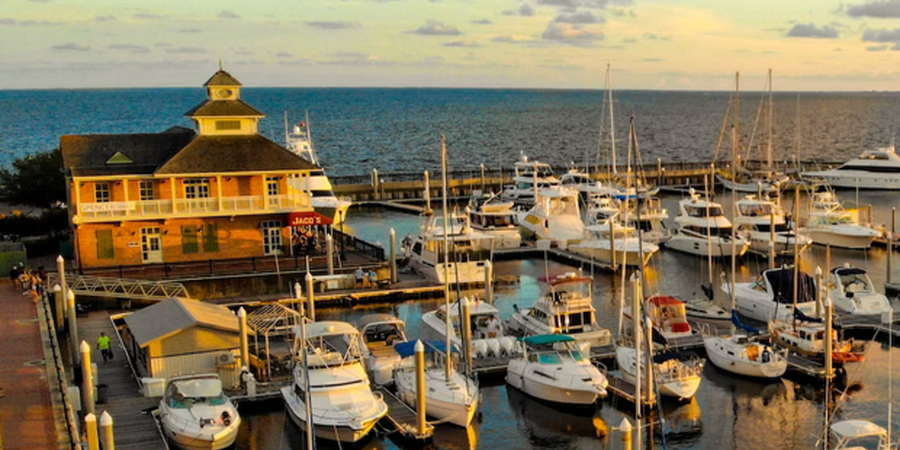Philadelphia, PA - Dock-and-dine restaurants provide an enjoyable dining experience, but before booking one on your itinerary, you must understand its core principles. Most restaurants with waterfront seating feature seafood as the focus of their menus; however, some also provide non-seafood items to round out their offering.
1. Check the Menu
Docking their boat at an on-water restaurant and enjoying an exquisite meal while taking in breathtaking water views is one of the great joys of summer for many boaters. However, some basic dock and dine etiquette rules should be observed before doing this to ensure a successful experience.
Most waterfront restaurants specialize in seafood dishes, so if you don't care much for fish or shellfish, it is wise to review the menu beforehand to ensure non-seafood items are available. Furthermore, to minimize environmental impact, consider ordering something without needing utensils (like salad) that won't produce waste. Bring your own cup, reusable cutlery, and bag for any leftover food or drinks that might arise.
Most dock and dine establishments will post signs directing where your boat should moor or tie up, along with any dress code or policy information. You may also find similar instructions in printed cruising guides or local apps - pay close attention when arriving, as these instructions may help ensure safe docking!
2. Check the Weather
Pulling up to a waterfront restaurant and docking the boat to enjoy a meal while taking in breathtaking water views is one of the classic summer boater experiences. Before leaving home on this voyage, check the weather report so you're fully prepared for whatever conditions arise on the water.
Waterfront restaurants tend to be open-air establishments without air conditioning, so if you plan on visiting on a hot day, bring a light jacket and/or sunscreen to remain calm. Conversely, for colder weather days, bring extra-wide towels or blankets as seating arrangements or covering options.
If the weather turns bad, most dock and dine restaurants offer rainout plans if they need to accommodate guests, such as comping part of their meal, offering take-home food or drinks, or offering other incentives as an added incentive.
3. Check the Dress Code
Docking at a waterfront restaurant and enjoying an unforgettable meal under the starry skies is one of the hallmarks of summer boating. Dining on the water requires its own set of etiquette rules to avoid embarrassing situations.
Some restaurants impose stringent dress codes prohibiting their patrons from wearing jeans and shorts; others specify appropriate attire, such as tuxedos for men or dresses and skirts for women, as proper attire for dining at dock and dine establishments. It is wise to research their policies before visiting one - before arriving!
Remember the following when planning for waterfront restaurants: Check the menu in advance. Most waterfront restaurants specialize in seafood; you might also find burgers and chicken. If seafood isn't your thing, ask if any non-seafood options are available. Final point: Don't forget that most waterfront restaurants are open-air environments without air conditioning, so dress accordingly on hot days by planning for light clothing options and dressing comfortably.
4. Check the Docking Conditions
As you dock at a waterfront restaurant, you must be mindful of the environmental conditions. Strong winds, waves, and currents can make docking more complex. To ease the docking process, try steering into wind or current rather than against it. When approaching a dock within 3 to 4 boat lengths, use intermittent power (Power - Neutral - Glide - Assess) and slowly creep towards it using intermittent power (Power - Neutral - Glide - Assess). This approach will prevent sudden loss of control and allow gradual procedure, which minimizes the chances of collision with a dock or another boat.
Attentive passengers should ensure they are prepared to set out fenders, as many eateries require, or offer them for free. Also, calling ahead and inquiring about their docking and dining policies before visiting an eatery is always wise; that way, you'll know if their long-face dock is out front or if they encourage diners to tie side-to-pilings on their boats behind.
5. Check the Time of Day
Dock and dine restaurants provide a delightful dining experience while taking advantage of breathtaking water views. Staff at these venues may also extend unique treatments, such as giving free birthday ice cream sundaes or floral bouquets to mark Mother's Day or another important date in their calendars, making the experience more personalized while increasing repeat business.
Before visiting a dock and dine establishment, planning your visit at an off-peak time of day is wise. Restaurants tend to be at their busiest from noon to 2 p.m., and then 6-8 p.m. Aim for these "off-peak times" to maximize your visit's success.
Most dock and dine restaurants will display signage to indicate where boaters should tie up, with some also providing mooring fields or private slips that customers can rent for an additional fee. Before your visit, call ahead and inquire about docking policies and dress code or etiquette rules specific to that restaurant.


